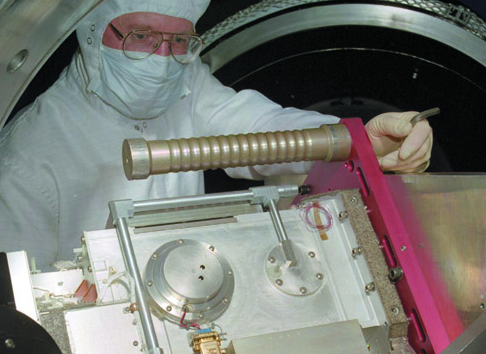

Solar Backscatter Ultraviolet Radiometer
Finding holes in Earth's ozone
Acting like Earth’s sunscreen, atmospheric ozone absorbs the Sun’s harmful ultraviolet (UV) rays, which are harmful to people and may also damage crops and aquatic ecosystems. Flying on NOAA weather satellites, SBUV/2 monitors the density and distribution of ozone in our atmosphere.
SBUV/2 looks down at the Earth and the reflected wavelengths of ozone and calculates the total ozone between the instrument and the ground. Data also indicate the ozone’s vertical distribution. SBUV/2 helped to discover the ozone hole above Antarctica in 1987 and continues to monitor it.
SBUV/2 looks down at the Earth and the reflected wavelengths of ozone and calculates the total ozone between the instrument and the ground. Data also indicate the ozone’s vertical distribution. SBUV/2 helped to discover the ozone hole above Antarctica in 1987 and continues to monitor it.
What We Did
Instrument provider
We built nine SBUV/2 instruments for NASA's Goddard Space Flight Center and NOAA. The first was launched in 1984, and the most recent was launched in 2009.
